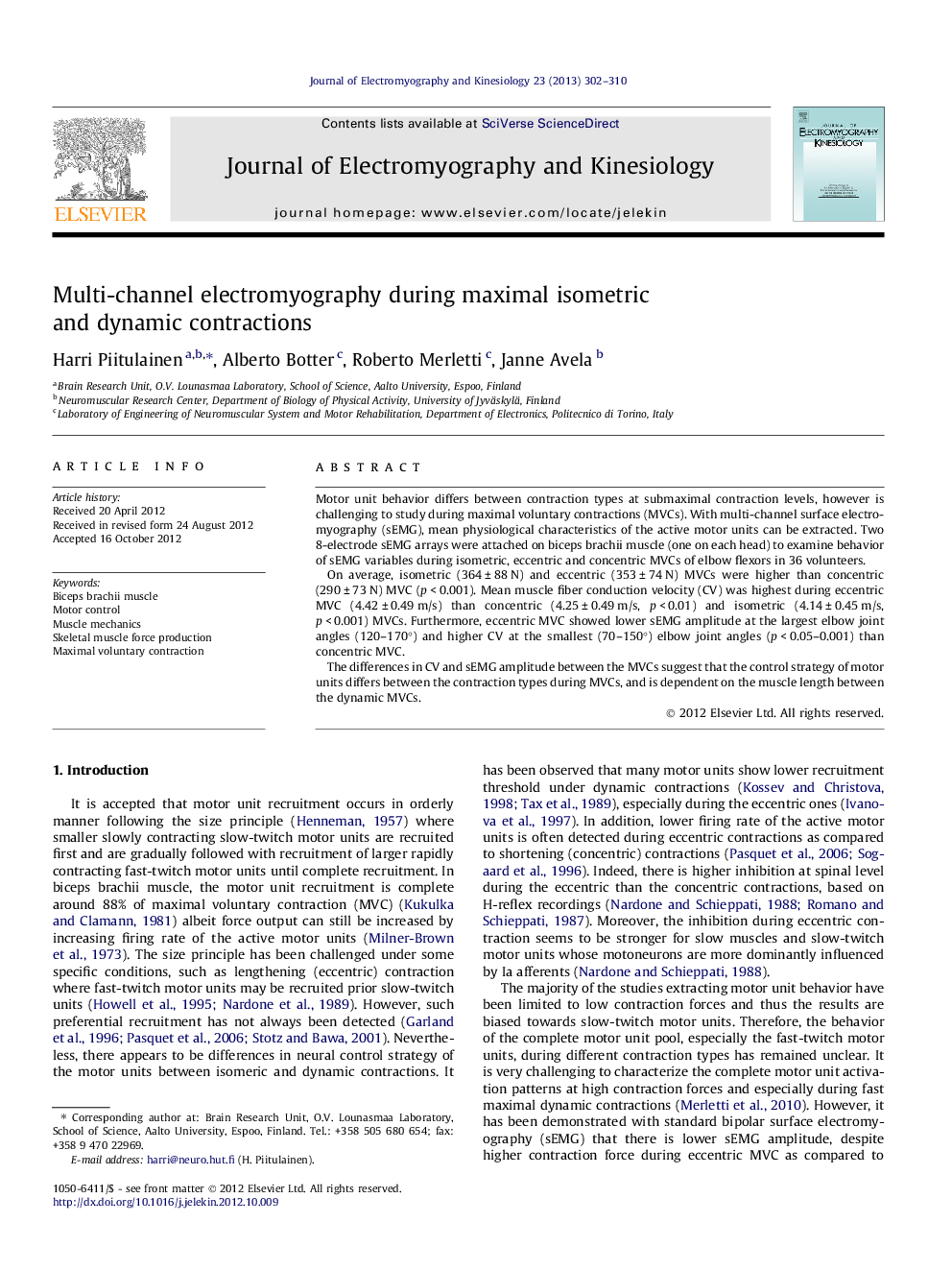| Article ID | Journal | Published Year | Pages | File Type |
|---|---|---|---|---|
| 4064953 | Journal of Electromyography and Kinesiology | 2013 | 9 Pages |
Motor unit behavior differs between contraction types at submaximal contraction levels, however is challenging to study during maximal voluntary contractions (MVCs). With multi-channel surface electromyography (sEMG), mean physiological characteristics of the active motor units can be extracted. Two 8-electrode sEMG arrays were attached on biceps brachii muscle (one on each head) to examine behavior of sEMG variables during isometric, eccentric and concentric MVCs of elbow flexors in 36 volunteers.On average, isometric (364 ± 88 N) and eccentric (353 ± 74 N) MVCs were higher than concentric (290 ± 73 N) MVC (p < 0.001). Mean muscle fiber conduction velocity (CV) was highest during eccentric MVC (4.42 ± 0.49 m/s) than concentric (4.25 ± 0.49 m/s, p < 0.01) and isometric (4.14 ± 0.45 m/s, p < 0.001) MVCs. Furthermore, eccentric MVC showed lower sEMG amplitude at the largest elbow joint angles (120–170°) and higher CV at the smallest (70–150°) elbow joint angles (p < 0.05–0.001) than concentric MVC.The differences in CV and sEMG amplitude between the MVCs suggest that the control strategy of motor units differs between the contraction types during MVCs, and is dependent on the muscle length between the dynamic MVCs.
